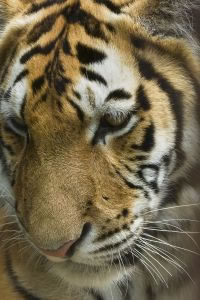Scientists believe that there have been five historical mass extinctions in which a significant portion of earth's biodiversity was lost over a short period of time. In the worst of these, the Palaeocene-Triassic extinction (251 million years ago), approximately 95% of marine and terrestrial species were lost. There have also been extreme climatic changes - from deep ice ages to periods like the PETM, where theoretically you could have comfortably gone swimming inside of the Arctic Circle.
The earth survived these changes. However, there are two major differences between these past events and the changes we are experiencing today. First, the major climate changes in past occurred before humans civilizations that depend on a stable climate were thought to have evolved. Human populations are concentrated in areas at high risk for the dangers of rising sea level, flooding, drought, and disease. We also rely on other vulnerable species for the many goods and services they provide, such as medicines; air and water purification; food; pollination; and cultural, recreational, and aesthetic values. Without adaptation, both humans and the species they depend on will be in danger.




The second difference is that current changes are taking place at a much faster rate than those of the distant past. In the past, changes occurred on the scale of thousands to millions of years, allowing time for the earth's ecosystems to adapt. The changes we are expecting in the present are projected to take place within the next century. Adaptation and mitigation strategies must be implemented immediately to escape the worst of the impacts of climate change. Fortunately, these changes are possible. In Lesson 9, you will learn about these mitigation and adaptation strategies.
Congratulations on finishing Lesson 5! Continue on to Lesson 6 to explore the chemistry of greenhouse gases in greater detail.